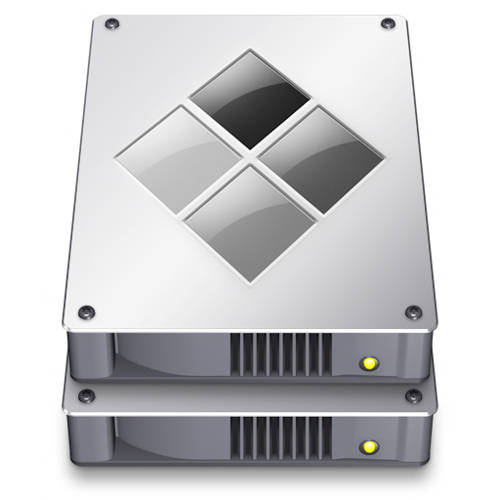
Dual booting is an excellent way one can make a computer capable of doing more. While many programs have adapted and are available for more than one operating system, there are still a great deal of limitations facing a computer running only Mac OS X. Luckily, there is also a fairly simple way to install Windows on your Apple computer so that you can take advantage of the usability both operating systems have to offer.
If you would like to learn more about dual booting, check out this article on the benefits of dual booting a Mac with Boot Camp. Please note that depending on what version of Mac you have installed, the following instructions may vary slightly. For further support, see Apple’s support page for Boot Camp Assistant.
Please keep in mind that the Academic Computing Center is not responsible for your hardware or software. While this tutorial may help you dual boot your Mac, you are ultimately and entirely responsible for what you do with your property. Please take into consideration your computing ability, and make sure you feel comfortable with all aspects of this tutorial, before attempting.
But what do you need to do this yourself? Not a whole lot. You’ll need:
-
an Apple computer with OS X version 10.5 or higher
-
a copy of whichever version of the Windows you want
-
about 12GB of removable storage (a flash drive or blank SD card work well typically)
-
intermediate knowledge of how to use the Apple operating system
-
some way of backing up your computer (Time Machine works very well for this)
1. Backup your files
Whether you choose to use Time Machine or you just copy your important files to an external hard drive, backing up your files is highly recommended. Setting up a dual boot requires your computer’s hard drive to be partitioned, and between that and installing Windows, it is a good idea to have your computer secured should anything go wrong. Keep in mind that some drive formats are not readable in both Windows and Mac environments without third party applications. If you plan on taking some of your files to your Windows side after installation, check that your drive has been formatted appropriately in Disk Utility (found under Utilities in the Applications folder).
2. Open Boot Camp Assistant
Boot Camp Assistant, located under the Utilities folder in Applications, has a few steps that need to be completed before your computer is ready to install Windows. After backing up your computer, open the program and check the boxes “Download the latest Windows support software from Apple” and “Install Windows 7.” What this does is download the latest drivers to make your hardware compatible with Windows software. Download this driver package to your removable storage device so it can be transferred to your future Windows partition after the new operating system is installed.
3. Choose how big you want your Windows partition to be
Whether you’re installing Windows to be your main operating system or just for side work, choosing how large or small your Mac and Windows partitions will be is an important decision. Unless you have external space, these two sizes dictate how much space each side of your computer has. Choose wisely, and know that once you partition, only reinstalling Windows from square one will allow you to reapportion space. When I did this, I divided my 320GB hard drive into 120GB for the Mac side and 200GB for the Windows side. I knew when I installed my dual boot that a lot more files and applications would be saved on my Windows side, so I set my system up to accommodate that. Consider for a moment what you will be using your two partitions for and how much space each should require.
4. Start Windows 7 Installation
Once you are done partitioning your hard drive, you are ready to start the installation. Insert your Windows disk now. Some versions have you format the soon-to-be Windows partition into NTFS or FAT at this time. FAT, while less secure, will allow users to save onto the Windows partition while booted into Mac. NTFS is noted as being more secure, but does not allow this feature. Follow the instructions from Boot Camp Assistant after choosing which option will work best for your purposes.
5. Restart and Install
Once Boot Camp is finished with Step 4, your computer should be ready to restart, boot into Windows, and finish installation. Make sure you still have your removable storage device with the drivers from Step 2. Your computer should restart into Windows and prompt you for standard installation information such a chosen language, timezone, etc. Installation steps after this will run, and may take a fair amount of time to complete.
6. Installing Drivers and Updates
Once the computer brings you to the desktop, insert your storage device and run the drivers that you downloaded in Step 2. Your computer should prompt you to run some Apple updates. Update as soon as possible after running the drivers on your removable storage device. The system updates are to enable compatibility with some of your Mac hardware and your new Windows operating system, so features like right click, WiFi capability, and some of you peripherals commonly will not function until these drivers and updates have been implemented. TIP: Check your Nvidia drivers. Boot Camp Assistant will commonly install an out-of-date version of your Nvidia software. Look up your hardware’s driver pack and install it here as well.
7. Use your machine!
You should now have a fully functional Windows partition on your Mac now. To switch between operating systems, restart and hold down the option key. By default, your Mac will start up into Windows unless you hold down option, or you can set the default operating system under your Mac System Preferences or in the Windows Control Panel under Performance and Maintenance.

[…] in using Boot Camp to set up a dual boot on your Mac? See our tutorial and try it for […]